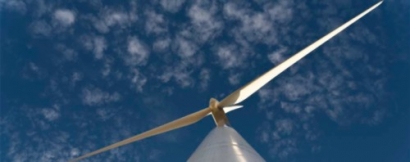
Currently the largest blades deployed in the U.S. are 67 m, but blades up to 88.4 m—or almost as long as a football field—have been deployed in Europe; blades up to 115 m are on the horizon. As turbine component sizes increase, logistical constraints can either reduce the number of developable sites or elevate costs, which can make some potential sites economically uncompetitive. Finding new solutions to logistical challenges associated with ever-larger components can enable the wind industry to achieve optimal wind levelized cost of energy (LCOE) options for every region of the United States.
DNV GL explored three innovation pathways to help identify high-value R&D opportunities:
“DNV GL identified a number of R&D activities that could make contributions to the viable development of supersized blades. These recommendations are feeding into the U.S. Department of Energy-funded Big Adaptive Rotor project to assess and prioritize technology needed to develop a cost-competitive land-based 5-MW turbine with 100-meter-long blades,” said Ryan Wiser, senior scientist, Lawrence Berkeley National Laboratory.
The acceleration of R&D to make supersized blades feasible requires collaboration between researchers in the United States, turbine manufacturers, blade manufacturers, and transportation logistics companies. Blades are the most critical component in determining the technical and economic performance of wind turbines. The logistics associated with supersized blades adds additional levels of complexity into the development process, which the industry and researchers must work collaboratively to address.
“To realize continued progress in making wind energy cost-competitive across all regions in the U.S., the wind industry must accelerate R&D in innovative approaches to blade design, manufacture and transportation,” said Richard S. Barnes, executive vice president, Energy North America at DNV GL. “The good news is that there appears to be fertile ground for R&D and accessible solutions on the near horizon.”
High-value R&D areas include:
The pathways identified by this study represent opportunities that, if realized, could significantly enable wide-scale deployment of supersized turbines across all regions of the United States.

